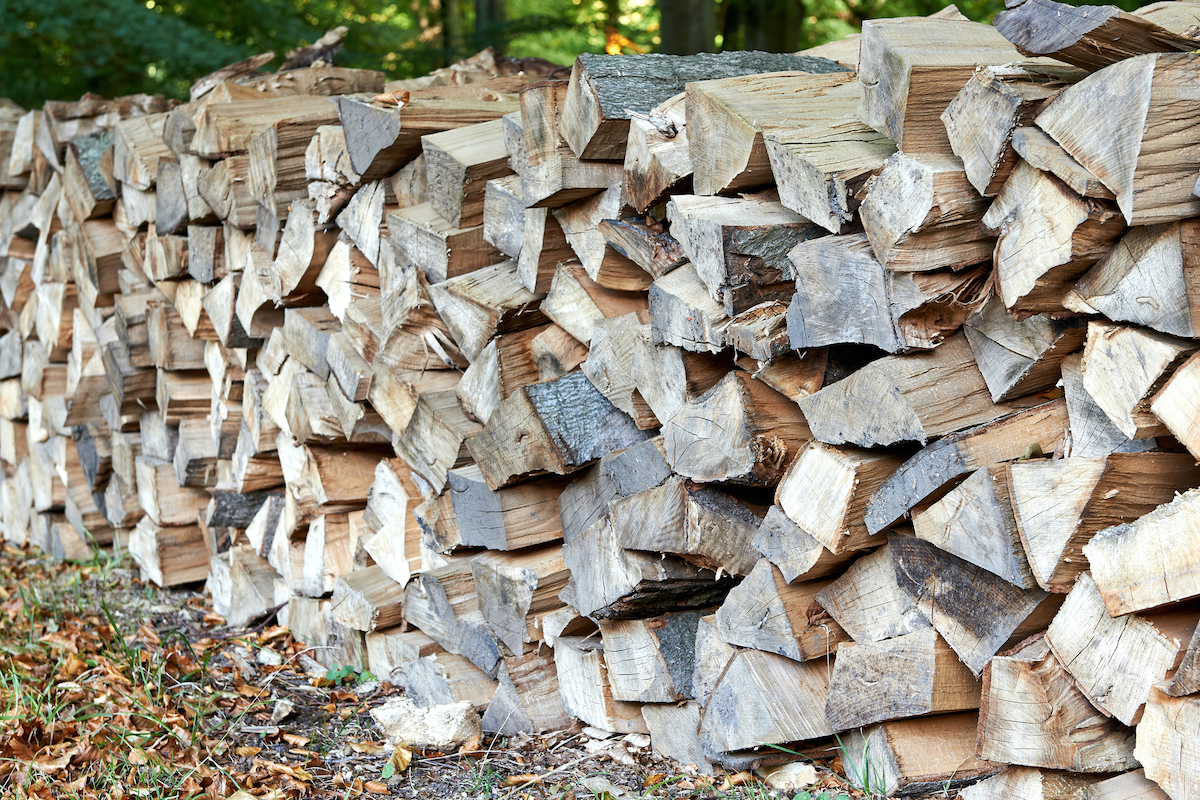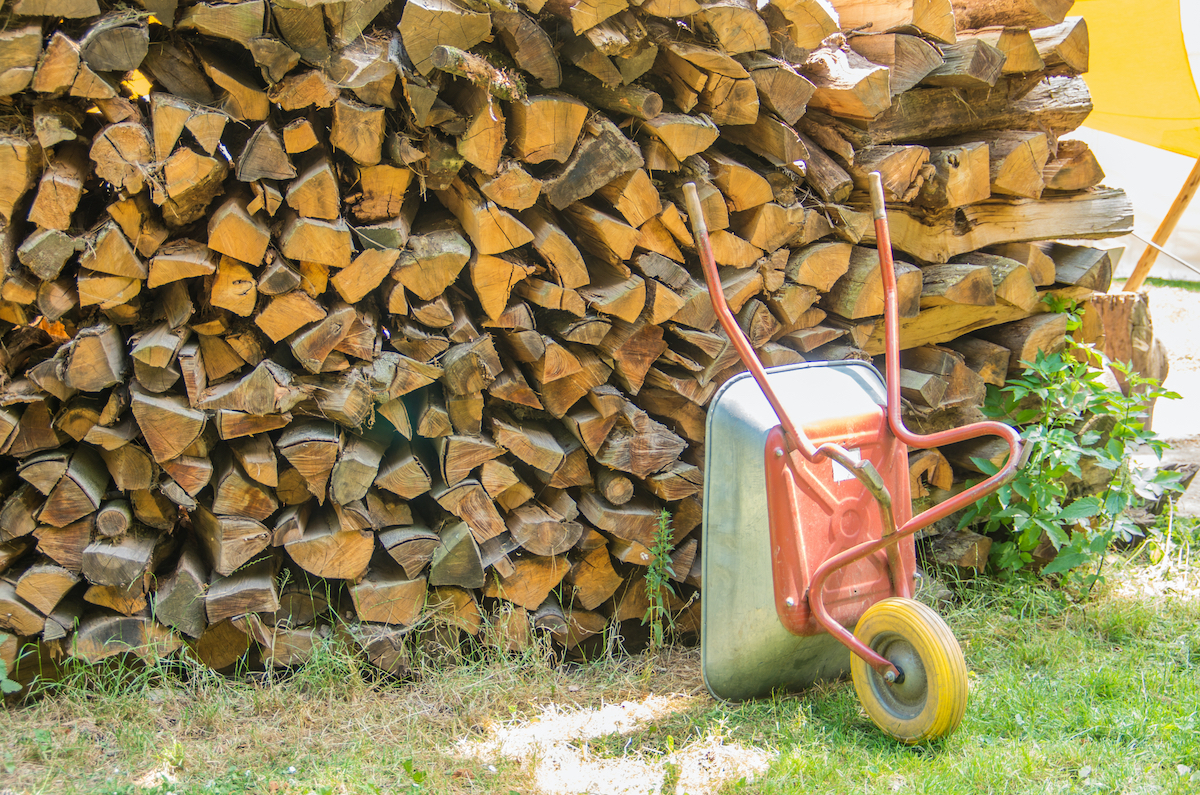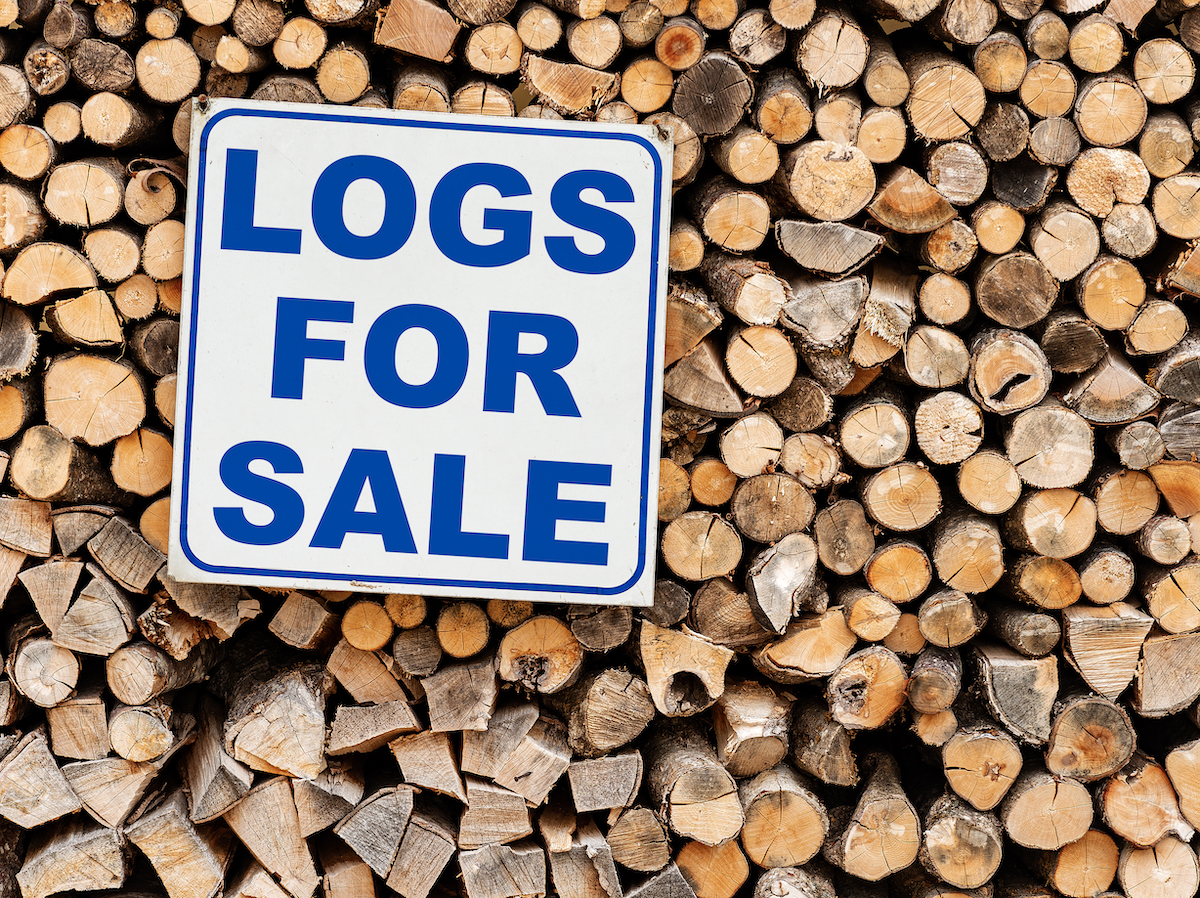

We may earn revenue from the products available on this page and participate in affiliate programs. Learn More ›
Q: I just bought a home with a wood-burning stove, and I want to stock up on wood. I’ve noticed wood is sold by the cord, but I’m new to this. How much is a cord of wood?
A: People who don’t regularly burn wood are unfamiliar with how much wood is in a “cord,” a unit of measurement describing a volume of wood. Woodcutters and those who burn wood in fireplaces or wood stoves intimately know this term, as they know how many cords of wood they need to make it through winter.
But what is a cord of wood, and how much wood will you need? Keep reading to learn how many cords you might need each season and how much it can typically cost.
A cord is 128 cubic feet of stacked dry firewood.
How big is a cord of wood? A cord is equivalent to 128 cubic feet of firewood. That’s the simple answer, but it still doesn’t help most homeowners who don’t know how that volume translates to actual logs.
Generally, a cord of wood is 4 feet tall, 4 feet deep, and 8 feet long. Years ago, when wood stoves and fireplaces were custom-built, the wood was left long (4 or 8 feet long). Buyers would cut it to their desired length to fit inside their fire box, then use an axe or maul to split them into smaller chunks. Obviously, that was a lot of work.
Today’s cords fortunately tend to be made up of 16-inch-long logs. This means that a full cord of wood consists of 16-inch-long logs placed in three rows until the stack is 4 feet tall and 8 feet wide.

The cost of a cord of wood depends on the location, whether the wood is dry, seasonality, and the type of wood.
Lucky folks have access to free wood, but most buy firewood—and pricing can be tricky. Cords in areas without densely wooded forests will cost significantly more than in the Northeast or Pacific Northwest, where forests abound. Also, a cord of dry wood might cost $250 in the summer, but when dry wood is scarce in the middle of winter, a cord may cost up to $400.
The species of wood matters as well. Oak heats very well and lasts quite a while, so it’s generally more expensive than aspen or birch. The latter two woods burn quickly and can even contain quite a bit of pitch, which can lead to dangerous creosote. This quality makes these wood less desirable but more affordable.
One-third and half cords are made up of shorter lengths of wood.
More accurately, one-third and half cords of wood can be made up of shorter lengths of firewood, but that isn’t always the case. In the aforementioned cords of old made up of longer logs, half and one-third-cord logs were typically 32 or 48 inches long, and the buyer would resaw them.
Today, a half cord of wood may feature three rows of 16-inch-long logs in piles that are 4 feet tall, 4 feet long, and 4 feet deep. Third cords are made of two rows that total 4 feet tall, 4 feet wide, and 32 inches deep.
The logs’ lengths do not impact the volume of wood in a cord. Shorter logs will require more rows, but overall, a cord of firewood is just 128 cubic feet. The wood can be presented in any way that the woodcutter slices it.

Face cords, rick cords, and truckloads are not standard units of measure.
There are a few terms in the woodcutting industry that are thrown around, specifically when marketed to homeowners. None of these terms are standard, however, so buyers need to beware when purchasing wood in these quantities.
- A face cord of wood is one row of wood that is 4 feet tall and 8 feet wide. There is no set measurement for the depth (though it should be 16 inches), so there is no standard volume.
- A “rick of wood” refers to a pile of stacked wood of any width, height, and depth. In fact, the term “rick” can be used to describe any piled material left out in the open, including hay, lumber, and other loose materials.
- A truckload refers to the amount of wood that fills up the bed of a pickup truck. However, truck beds are not standard. Compact trucks have very small beds that are about 5 feet long, while full-size trucks have long, 8-foot-long beds. There are also other truck bed sizes in between, so it’s best not to rely on a “truckload” as a reliable unit for measuring firewood.
RELATED: Firewood: What Type Should You Use?
